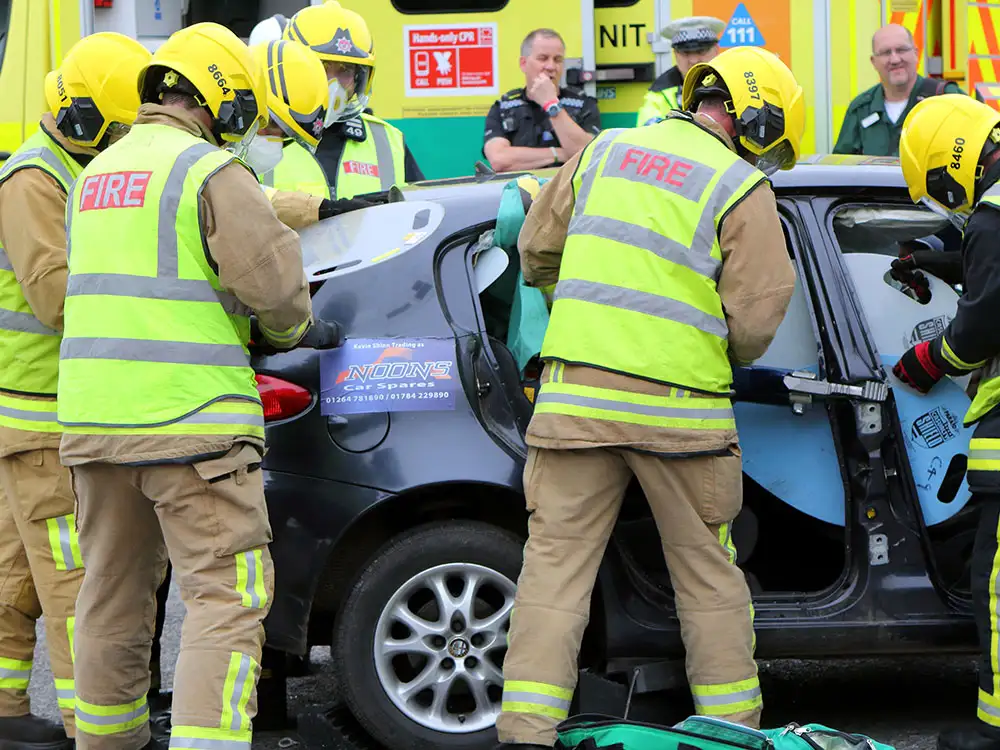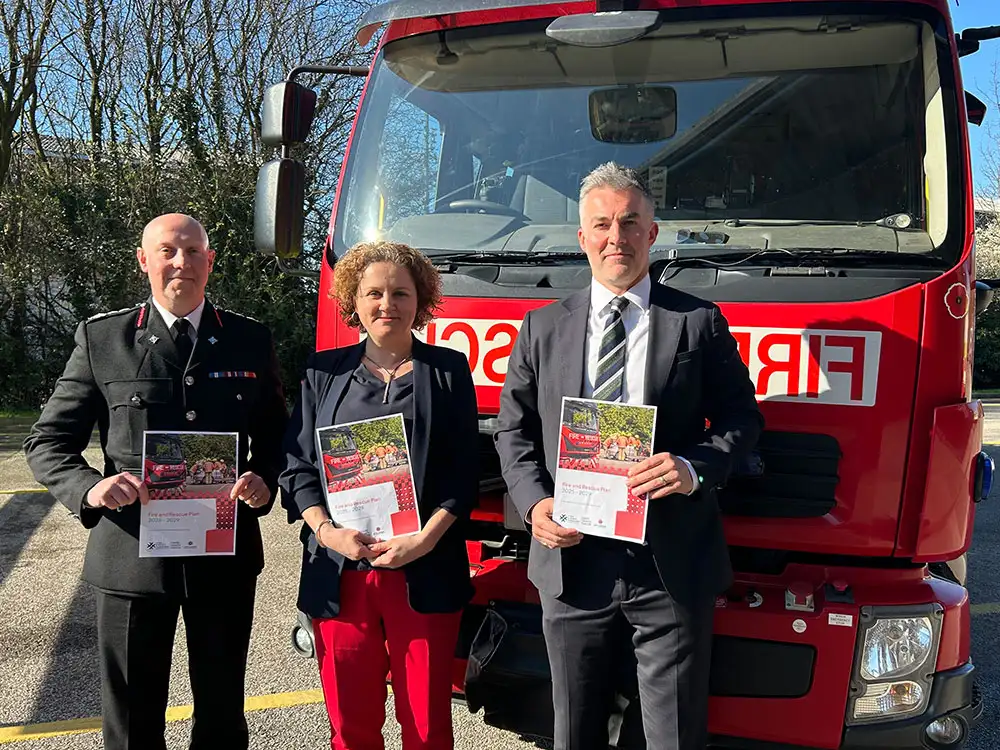North Yorkshire Fire and Rescue Service will be expected to adapt to deal with a wider range of emergencies in the coming years under a new county-wide plan.
Tackling the causes of fires, improving safety in buildings, preparing communities for emergencies and investing in new equipment and staff are among the aims of the Fire and Rescue Plan.
York and North Yorkshire Mayor David Skaith and Deputy Mayor Jo Coles said the plan recognised firefighters’ roles were changing, with climate change expected to increase call outs flooding.
The plan sets out six key priorities over the next four years. These are:
- Targeted Prevention
Deliver targeted prevention activities to keep people in York and North Yorkshire safe from fires, road traffic collisions, water hazards and other emergencies. - Protected Built Environment
Provide targeted support and advice to protect people and properties from fires through safer buildings in York and North Yorkshire. - Effective Emergency Response
Provide an effective response to incidents across York and North Yorkshire, as quickly as possible. - Stronger Communities
Prepare for major disruptions, working in collaboration with our partners to support communities across York and North Yorkshire to effectively prepare for emergencies and recover from them when they occur. - Supported, Safe and Skilled Staff
Foster a culture of excellence and belonging in North Yorkshire Fire and Rescue Service. Invest in training, safety and welfare to maintain a skilled and resilient Workforce. - Financial Stability
Ensure the long-term financial sustainability of North Yorkshire Fire and Rescue Service and be transparent in our spending.
The plan includes work to respond to new fire risks including from e-scooters and e-bikes and an aim to get more national funding for flood defences.
It also includes dealing with buildings that do not comply with fire safety rules and acting on changes recommended by the inquiry into the 2017 Grenfell Tower fire.
The possibility of building affordable homes on fire station land for staff is also set to be explored as part of efforts to recruit and retain more firefighters.
Huge tax hike
Work is also set to take place to make communities more aware of potential hazards and how to respond and with businesses to encourage more people to become on-call firefighters.
Efforts to modernise fire stations and to recruit a more diverse range of firefighters are also planned along with investment to make the service more efficient.
Labour Mayor Mr Skaith told the Local Democracy Reporting Service (LDRS) the plan aimed to overcome challenges including North Yorkshire’s geography which made responding to call outs harder than in elsewhere.
He added this year’s hike in the fire and rescue precept, equivalent to a 28 per cent increase or £24 compared to 2024-5, was necessary after years of under-investment.
The mayor said: “The service needs to adapt and invest in estates, equipment and staff, investing to make it more efficient will have a positive knock-on effect.
“The calls that the service is dealing with now are changing, over the last 10 to 15 years we’ve seen firefighters responding to much more flooding and the influx of visitors North Yorkshire gets every year particularly in coastal areas also adds pressure.
“Firefighters will always respond to call outs for fires but prevention aims to reduce the amount of call outs and investment and training aims to prepare the service for the future.”

Deputy Mayor for Fire Jo Coles told LDRS the plan also aimed to cut road deaths, with firefighters increasingly responding to traffic accidents.
The Labour deputy mayor said: “Road safety is a big issue for the service, 32 people died on the roads last year and we’ve had 11 deaths this year and we’re only in April.
“Every death is a tragedy and we want to work to raise awareness of road hazards to meet the aim of having zero people killed or seriously injured.”
Service CFO Mr Dyson said he welcomed the public’s participation in drawing up the Fire and Rescue Plan through a consultation which more than 1,600 people took part in.
The officer told LDRS: “A long time ago the service saw a reduction in house fires but we’ve seen an increase in other types of emergencies which is concerning.
“We’re investing in the service, including in new equipment to protect firefighters, and we’re working to make sure our staff have the best possible employment experience, welfare and support.”
